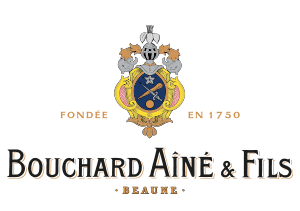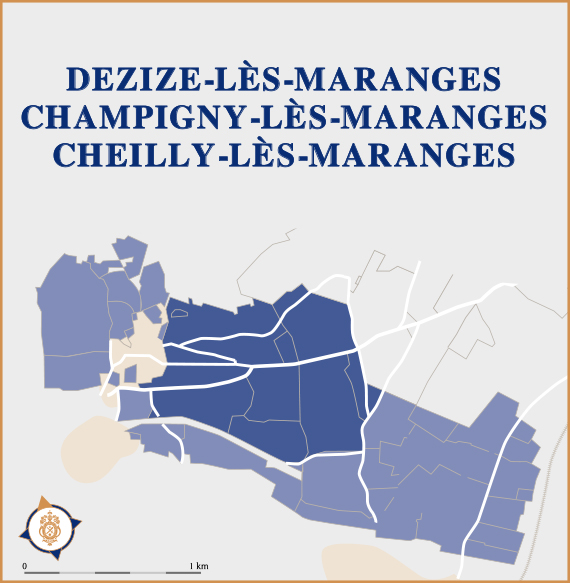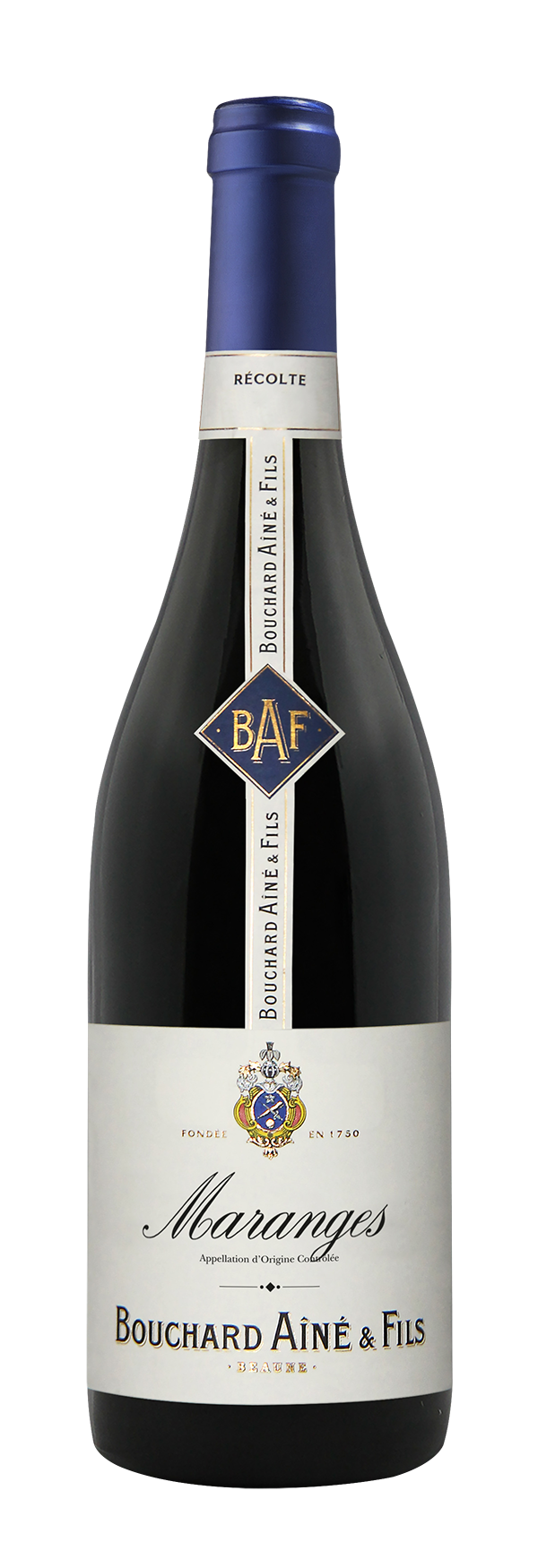MARANGES 2020
MARANGES 2020
Varietal
Tasting notes
Nose: Complex bouquet of black fruits with spicy notes.
Palate: A charming and structured wine with present but elegant tannins, well-balanced with powerful aromas of wild fruit, undergrowth and liquorice.
Food and wine pairing
Serving suggestions
Ageing potential
Origins
The vineyards stretch across the communes of Cheilly-lès-Maranges, Dezize-lès-Maranges and Sampigny-lès-Maranges. The hillsides do not follow the alignment of the Côte de Beaune, but they have the same origin and geological nature. A fabric of hills and varied slopes. The most common exposure is south/south-east, at an altitude of between 240 and 400 metres.
Cheilly has fairly light, stony soils. Sampigny and Dezize share the Climats of the south of Santenay: brown limestone and limestone marl.
Vinification and maturing
The grapes are harvested by hand and sorted manually on arrival at the winery. All the grapes were de-stemmed. Traditional alcoholic fermentation with a cold maceration at first (5-8 days), with natural yeast. Punching down twice a day.
15 days of fermentation to obtain free run juice and press juice blend. Then, large racking to preserve the fine lies.
Maturing process and ageing 12 months in French oak 228 L. barrels.
Vintage : 2020
The current public health crisis has certainly marked this year’s harvest, which nonetheless has been able to go ahead! Despite the year’s record temperatures and lack of rainfall, there is been no lack of quality, although yields are down, with an especially mixed picture with regard to reds. However, these have generally been very well-balanced. Overall, we have seen nice levels of acidity, promising good aging potential…
All over Burgundy, 2020 was notable for its mildness and low rainfall. After a winter with no serious frosts, we went straight into a spring dominated by sunny, dry weather, resulting in very early bud break. Infrequent outbreaks of rain in June and July were not enough to stave off water shortages. Very high summer temperatures combined with intense sun exposure levels led to the vines gradually falling prey to hydric stress, causing delays to fruit ripening before harvest-time.
Once again, the vegetative cycle was shortened, being almost three weeks ahead of 2019’s. Thankfully, the harvest was saved by the relative cool of the nights. The harvest was of marvellous quality but there was very little juice in the red grapes (reduction of 30 to 50%), and reasonable potential alcohol, despite the heat. The whites, on the other hand, coped very well with these extreme conditions and yields were very good.
Relatively poor yields for the reds, normal yields for the whites. Some appellations achieved excellent levels of optimal ripeness, with 50% of grapes harvested with the ‘vendange entière’ (no destemming) approach.
Harvest started on the 21st August for the Côte Chalonnaise, more specifically, the Givry reds and then on the 23rd of August the first Chardonnay grapes were handpicked in the shape of the Beaune 1er cru Les Marconnets.
Our winemaker's first tasting impressions of the 2020 vintage:
‘A very promising year for the whites with a fine balance between acidity and alcohol and intense white fruit aromas. Alcoholic fermentation in barrels lasted four weeks. Millerandage affected the reds leading to less juice but nice colour and distinct red berry aromas. With its generous tannins, this year looks set to be one to cellar.
However, there are some small variations from terroir to terroir. Côte Chalonnaise reds are characterized by jammy notes while the Côte Beaune have good aromatic intensity and nice colour. The Côte de Nuits is giving us some lovely cuvées just now with summer fruit notes and wonderfully velvety tannins.’





 PDF file
PDF file